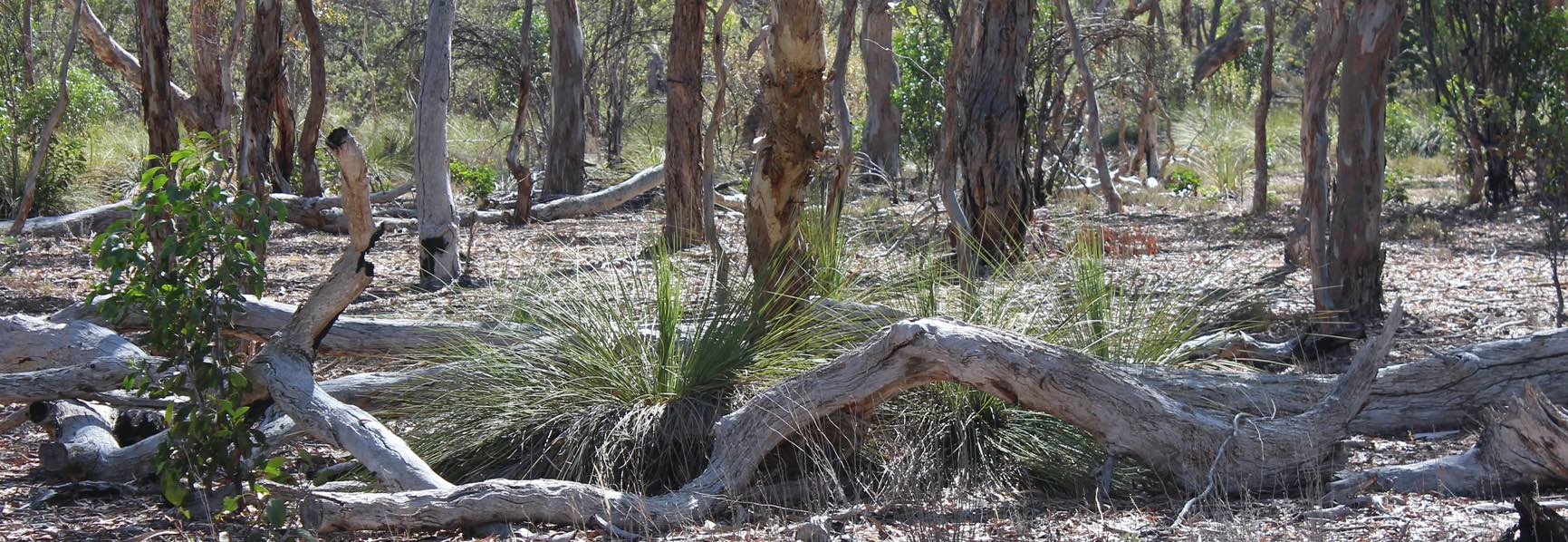Are you a tree lover? Native trees to look out for in Kingston SE.
Filed under: Blog
Comments: Comments Off on Are you a tree lover? Native trees to look out for in Kingston SE.

We’re fortunate to have an abundant and diverse range of native vegetation on the Limestone Coast. If you have a love of nature, you’ll appreciate the importance of this natural vegetation which we strive to protect in Kingston.
Landscape South Australia (Limestone Coast) have produced some fact sheets with information about woodlands, locations and their importance. We’ve summarised them here for you and attached the fact sheets if you would like more information.
On your next drive or walk in the woods, take a closer look and see what you spot along the way.
Red Gum Woodlands
Red Gums are found throughout Australia. They grow very slowly but can live up to 500 years, because they are enormously adaptable to harsh Australian conditions. They withstand flooding and will tolerate draught conditions by dropping both leave and limbs to reduce the need for water.
They have a single trunk which ranges from 8-42 metres high. The trunk has a smooth greyish-cream bark and green, slender leaves. Creamy-white flowers are produced in late spring and early summer. Some of the trees will show scars where the bark was removed for canoes or shields by indigenous people, and some have had the base burnt out for shelter.
For more information on restoration and threats, please download Landscape SA’s Red Gum Fact Sheet.
Mallee
Mallee is an Aboriginal name for the species of eucalypts which grow to a height of 2-9 metres, with many stems growing from a woody base known as a lignotuber. They thrive in harsh conditions and have a flattened canopy. In coastal areas these trees can be stunted or angled. Most Mallee trees have smooth bark which is shed in strips. Along the coast between Kingston and Beachport, you’ll find Coastal Mallee.
The Mallee in our region around Kingston SE is some of the wettest mallee in the country which supports the stocky, ground-dwelling Malleefowl.
For more information on restoration and threats, please download Landscape SA’s Mallee Fact Sheet.
Grey Box Grassy Woodlands
You’ll find what remains of Grey Box Eucalyptus further inland around Mudulla and Bordertown. The Grey Box is a single trunk tree with olive green leaves and white flowers blooming from March to May. The bark is grey with white patches, and flaky with a box pattern on the lower part of the trunk. In its habitat, the Grey Box is a dominant tree with native grasses growing around the base.
Grey Box Grassy Woodlands have been substantially cleared as they’re often found on productive farming land. They are now nationally listed as an endangered species.
For more information on restoration and threats, please download Landscape SA’s Grey Box Fact Sheet.
SA Blue Gum Woodlands
Commonly known as Blue Gum in SA due to its bluish foliage, and as Yellow Gum in Victoria due to its hard yellowish wood, this tree is used for commercial purposes – posts, poles and firewood. In the South East, these trees can reach a height of 25-30 metres with large pink or cream blossoms.
SA Blue Gum Woodlands now only occupy about 10% of their original footprint. They provide a haven for native fauna and abundant flowers for migratory birds and native wildlife including reptiles and mammals.
For more information on restoration and threats, please download Landscape SA’s SA Blue Gum Fact Sheet.
Stringybark Woodlands
A Stringybark refers to many of the Eucalypts which have a thick fibrous bark. There are two types of Stringybark in the South East – Brown Stringybark which is more common around Kingston, and Desert Stringybark which is found north of Naracoorte. Brown Stringybark is a more upright tree growing up to 25 metres tall and Desert Stringybark is a multi-stemmed, spreading tree, growing 3-10 metres.
Stringybark woodlands provide an important habitat for many native species. In spring, the flowers attract pollinating insects and honeyeaters. Brown Stringybark and Desert Stringybark are essential to the survival of the endangered Red-tailed Black Cockatoo as it provides two of the three seeds this cockatoo requires.
For more information on restoration and threats, please download Landscape SA’s Stringybark Fact Sheet.
On our “vulnerable” list
While you’re out, look out for the Little Dip Spider Orchid and the Monarto Mintbush which have delicate pink, purple or white flowers. Currently both these plans are classified as vulnerable and efforts are in place to protect and grow their numbers.
Choose Kingston Foreshore Caravan Park on your next trip to the Limestone Coast
Call Kingston Foreshore Caravan park and book into powered or unpowered sites, ensuite and family cabins right on the foreshore of Lacepede Bay. Call us on 08 8767 2050 or book online here.

